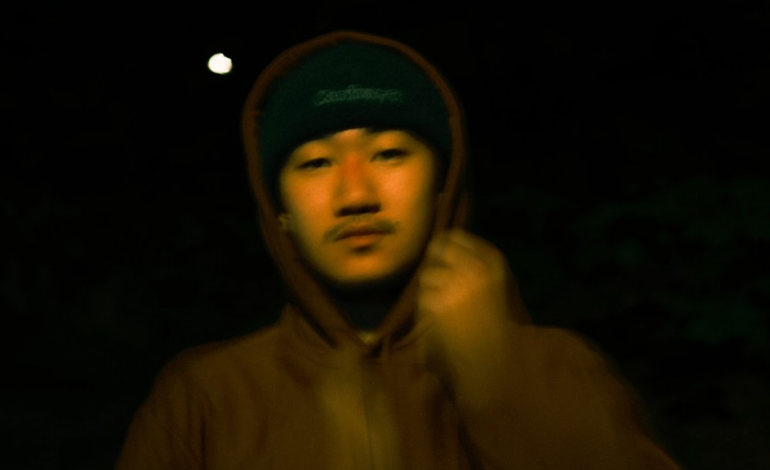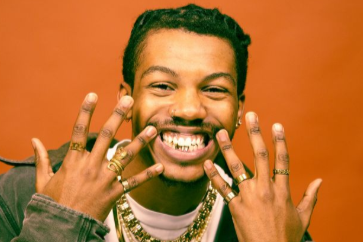Swiss singer-songwriter Andrea Schmider returns with a deeply personal and artfully arranged new EP titled, Potpourri. The five-track collection captures life’s many layers – from longing and loneliness to joy and transformation – woven together in a tapestry of emotional depth, humour, and healing. We caught up with the songstress to discuss all things music below.
You worked with producer Manuel Halter again on this EP – what makes that creative partnership work so well?
I think we both approach music in a similar way but bring different things to the table, which creates a good blend. Having known each other for many years and being friends also helps as there already is a good amount of trust. Which makes it easier to entrust him with my songs
Can you tell us a bit about how the songs were developed in the studio? Did they evolve much from your original demos?
When I meet up with Manu the song is basically written in the sense that the story is clear and there is already a structure for the song. I might play him a voice memo version or just play it live. In the beginning, we talk a lot about where I want to go musically with the songs and search for references. Then we start jamming together to get a feel of the song. We might change some things around (e.g. melody, progression, pace), talk about instrumentation and start to create pre-production tracks. Those are sent to the musicians as a reference. I love it when different creative energies get together and so the songs evolve and change right up until the final mixing stages.
How did you choose your collaborators for Potpourri, including co-writer Nadine Yomi and the studio musicians?
Nadine is a dear friend of mine and we have known each other for a very long time. She is a phenomenal songwriter so – like with Manu – there is a great combination of friendship, and trust but also musical talent. Manu is very well connected to the Swiss and German music scenes and gathers the musicians that fit our vision best. Most of them I met during the recording session (although the drummer Mathias Meusel also played on my very first EP in 2012!). I love it when my productions bring old and new friends together.
You’ve been active in the music scene for over a decade. How do you approach releasing music in today’s fast-paced, streaming-first world?
This is a big challenge, especially as my music is so personal and I want it to have emotional depth. Which cannot be rushed. I know, in order to grow in the „market“, it is important to release new music regularly. But also, life needs to be lived and enjoyed in order to have something to write about. It is a fine balance between the economic pressure of fast-paced releasing and my wish to produce songs that go deeper, and that need time to grow. At the moment I am starting to write again and hope to be able to produce new music soon.
Your sound is very cohesive, yet genre-fluid. Do you think genre still matters when you’re creating or marketing music?
It probably depends on what your goals are. If you want to grow fast and have a clear target audience, sticking to a specific genre might be the way to go. As much as I wish I could define my genre and audience sometimes, I always struggle to do so. My main goal is to create authentic songs and stories, so I try to stick to what feels true to that and embrace the diversity in genre and audience.
What are some challenges you’ve faced as an independent artist in Switzerland, and how have you navigated them?
Being a late bloomer as a musician (I started out professionally in my late thirties and am 54 years old now), I find it harder to get recognition. The business seems to be more set up for younger artists. I observe this in particular in funding competitions or in applications for cultural funding contributions. Many have an age limit – and I’m usually over it. Of course, I can see the importance and the need to promote young talent in particular. Nevertheless, I think it’s a bit of a shame. I find that the more I have lived, the better and deeper my songs become. I have no ambitions to become the next pop star, but I would like to continue releasing art that has matured through life. I also find that worthy of support. However, I cannot say if this is specific to Switzerland or a more general issue.
How do you balance artistic authenticity with the practicalities of the music industry – like promotion, visuals, and deadlines?
It is indeed a balancing act between economic results and artistic authenticity. I think it’s important as an artist to embrace the economic reality. It is also a business. And at the same time to keep the fire of creating authentic art burning. My age helps me with that. I’m much more in touch with myself than I was 20 years ago. I know better what I want and what I don’t want. That makes the balancing act a lot easier. To make it more practical: In terms of promotion, I’m pursuing a multi-pronged strategy: on the one hand, airplay, which is commercially interesting. On the other hand, I also push playlist placements on streaming platforms. This allows my audience to grow, especially internationally. This means that I have one or two radio-friendly songs in every production. I tend to promote other songs on Spotify. As a third track, I have also booked a targeted press campaign for the current EP. This strategy should allow me to grow my music, brand and audience gradually and so lead to long-term success and sustainability. Concerning visuals I have to privilege to have a lot of very talented friends and have always found some people who get me enough to create great visuals for my music. With deadlines, it again helps to think business-like. At the beginning of a production the producer and I create a schedule with all the deadlines and so plan ahead. It also helps a bit that I have written my master’s thesis about the process of an independent singer-songwriter production.
Has performing live influenced how you write or arrange your songs in the studio?
It is important to me, that I know the songs work with just the guitar or piano and my voice. That is how I write and therefore the heart of the songs. When in the studio it is more about the crafting of a soundscape around that heart. It is very nice to have but the songs also are good songs without it. I also perform often alone or maybe with just a pianist. So, the songs have to work in a stripped-down version. When getting together with my live musicians we try to create the vibe and a good live experience for the audience – and this may sound a little different than the studio version. But at a concert, you also have the feeling of being in the same room, which adds to the experience. In a nutshell: I try not to copy the studio version but to kind of re-invent the songs for a live audience.
You’ve had success across radio and digital platforms. What’s been most effective in helping your music reach a wider audience?
To reach a wider audience I believe that digital platforms are more important. Radio is more location-bound. E.g. many people in Switzerland have heard my song Colors of the Heart as it has been played on Radio Swisspop for almost 9 years (!) now. But most of the people do not know that this is a song by me. But it is important, for example, to book gigs. And then I open my Spotify for Artists and see that my songs are played in more than 60 countries worldwide and the number of new listeners and subscribers is – though slowly – climbing. But as I mentioned above, I believe both are necessary to grow my audience.
What’s next for you after Potpourri – more live shows, collaborations, or perhaps a full album?
At the moment I am out of funds to start production again straight away. But I will start writing again over the summer. Then we’ll see what happens. I’m also planning to tour again come fall/winter. And I am always open for collaborations – local or international! My co-writer Nadine is releasing an album in November and hopes to come over to London and join her for her release party and maybe play some gigs as well.
INSTAGRAM | FACEBOOK | YOUTUBE | SOUNDCLOUD | SPOTIFY | WEBSITE


